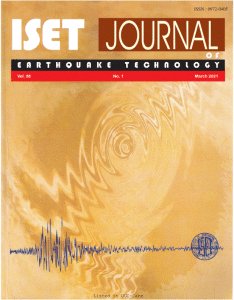Home > Issues & Journals
SEISMIC SIGNAL DETECTION AND FURTHER PROCESSING USING ARRAY SEISMOGRAMS AN OVERVIEW
S. k. Агога Falguni Boy and T.K. Basu
Paper No.: 336
|
Vol.: 30
|
No.: 4
|
December, 1993
|
pp. 125-141

Abstract
Digftal signal detectionand processing involving automated procedures is recognised as an important thrust ánea activity in modern seismology. Facilitated by the high qualitydata obtained from hainly Gauribidanur seismic array since its ihstallation in southern India over twenty-five years ago, this activity is purported to progressively evolve efficient methods and techniques to detect signals of seismic events, especially week ones, from any region of the world and identify their sources through feature extraction. This paper gives an overview of major data processing techniques established by us and mentions some future projections including development of a knowledge based expert system, Among the methods of signal detection from essentially short period array records, optimum beamforming, correlogram, cumenerogram and prediction error filtering have been emphasised. For source in diaçrimination employing single array data, particularly in case of events with very shallow focal depth, scaled complexity combined with third moment of frequency of P signal s shown to be, reasonably good. However, temporal and spectral characteristics of the secondary arrivals such as PcP and PP are found to be promising discriminants. It is planned to support these processora by extensively employing long period as well as broadband data that would also afford looking into some of the interesting diagnostic features of S'(shear wave) phases.
Keywords: Not Available
©2025. ISET. All Rights Reserved.